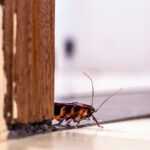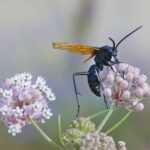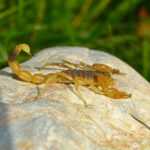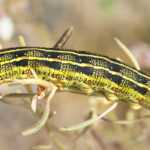What Do Earwigs Eat? A Guide to Their Diet & Food Preferences
Discover what earwigs eat and how their diet can affect your garden and home. Learn simple, useful facts about these insects today.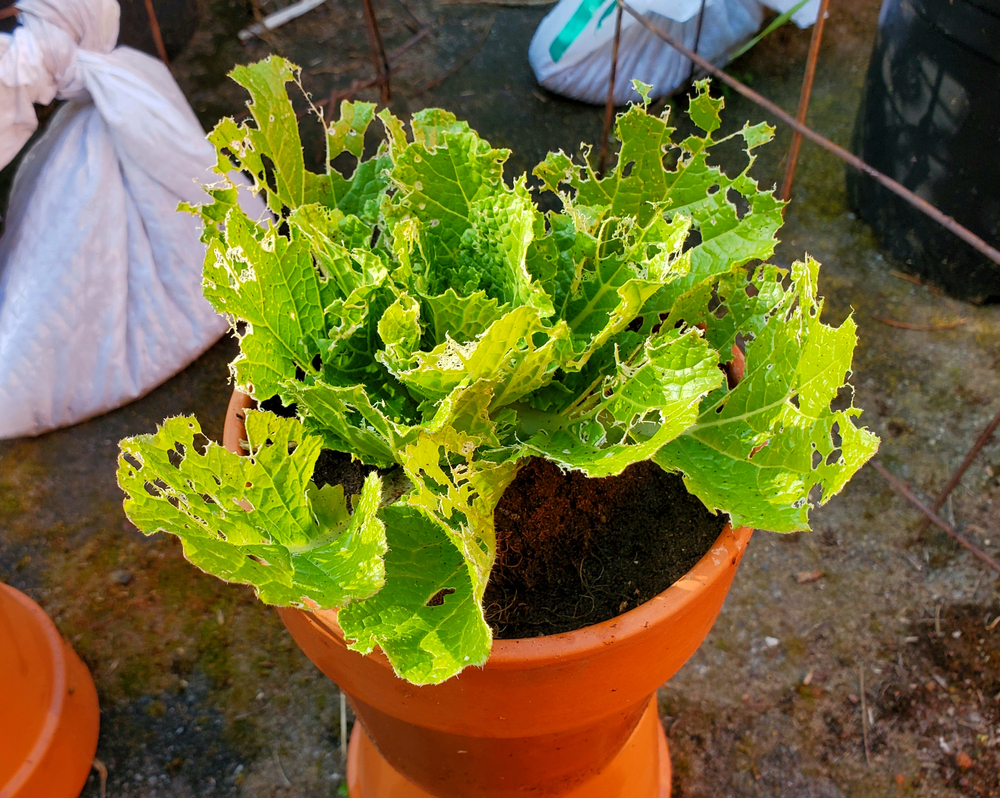
What Do Earwigs Eat? 5 Key Dietary Insights
Earwigs mainly eat decaying organic matter, leaves, insects, and food scraps. So, what do earwigs eat, specifically? Understanding their diet can help you manage their presence in gardens and homes more effectively.
- Earwigs thrive in dark, moist environments and are drawn to decaying organic matter, making gardens with mulch and leaf litter ideal habitats.
- As omnivores, earwigs feed on a diverse diet of decaying plant matter and soft-bodied insects, causing significant damage to vulnerable plants like roses and young vegetables.
- Effective pest control involves removing organic debris, sealing potential entry points, and using traps to reduce earwig populations and protect plants.
Earwig Habitats and Feeding Behavior
Earwigs thrive in dark, moist environments, making them common in areas such as crawl spaces, woodpiles, and damp basements. These moist habitats provide the ideal conditions for earwigs to find food and shelter. When considering where earwigs live, think of any place that remains damp and shaded throughout the day.
These insects are particularly drawn to decaying organic matter. They feed on rotting wood, dead leaves, and other decomposing plant materials that they find in their habitats. This makes gardens with a lot of leaf litter or mulch a perfect environment for them. Earwigs prefer such environments because they offer both food and protection from predators.
Interestingly, earwigs are not just limited to outdoor environments. Earwigs may find their way indoors, especially during dry or extreme weather conditions when they seek out moisture. Once inside, they look for potential hiding spots in basements, bathrooms, or kitchens where they can stay damp and cool. This adaptability to both outdoor and indoor environments makes them a versatile pest.
Female earwig nesting habits are particularly fascinating. They lay eggs in secluded, moist areas and fiercely protect their young until they are mature enough to fend for themselves. This maternal behavior ensures that immature earwigs have a safe environment to grow, often close to food sources, including the European earwig.
Understanding the habitats and feeding behavior of earwigs is crucial for effective pest management. Understanding their habitats and diet allows for more effective strategies to trap earwigs and reduce their populations.
Primary Diet of Earwigs
Earwigs are omnivores, meaning they have a diverse diet that includes both plant and animal matter. The primary components of an earwig’s diet are decaying organic matter, soft-bodied insects, and various plant materials. This varied diet allows them to thrive in multiple environments, from gardens to compost piles.
One of the key plant materials that earwigs feed on includes seedlings and the leaves of various flowering plants. They are particularly fond of plants with large flowers, which provide a rich source of nutrients.
In addition to plant matter, earwigs also consume small insects like aphids, grubs, and larvae. This aspect of their diet can be beneficial in controlling other pests in your garden. However, the damage they cause to plants often outweighs this benefit. Earwigs may also target the buds and fruits of plants, leading to significant damage in gardens and orchards.
Decaying organic matter forms a significant part of their diet as well. Earwigs eat dead leaves, wood, fungi, and microorganisms found in soil and mulch, including decaying vegetation. This is why they are commonly found in compost piles and areas with a lot of organic debris. By breaking down this matter, they play a role in the ecosystem, but their presence can be detrimental to cultivated plants.
Understanding what earwigs eat helps in developing effective pest control strategies. Knowing that they are opportunistic feeders who thrive on a mix of plant and animal matter can guide you in managing their food sources.
Earwigs and Plant Damage
Earwigs can cause significant damage to a wide variety of plants, making them a formidable pest in gardens and farms. They often feed on the buds, leaves, flowers, and fruits of plants, creating small ragged holes in their tissues. This type of damage can be particularly harmful to young plants and seedlings, which are more vulnerable to feeding.
One of the most common signs of earwig damage is the presence of chewed leaves and petals on ornamental plants like roses and marigolds. These insects are especially attracted to soft fruits and vegetables, which can lead them into gardens and orchards. Tomatoes, cucumbers, and squash are among their favorite targets.
In addition to ornamental plants, earwigs also pose a threat to fruit trees and vegetables. They can damage the leaves and fruits of crops like lettuce and strawberries, leading to reduced yields and compromised plant health. This can be particularly frustrating for gardeners and farmers who rely on these crops for their livelihood.
Earwig damage is not limited to outdoor plants. They can also affect potted plants and indoor gardens, especially if the environment is conducive to their needs. Damp areas with decaying plant matter are prime targets for these pests. Therefore, monitoring both outdoor and indoor plants for signs of earwig activity indoors becomes crucial.
Understanding the extent of earwig damage can help you take proactive measures to protect your plants. Identifying their favorite foods and preferred habitats helps in implementing strategies to minimize their impact.
Earwigs as Opportunistic Feeders
Earwigs are known for their opportunistic feeding behavior, which means they consume a variety of food sources based on availability. This adaptability allows them to thrive in diverse environments, from gardens to kitchens. Their diet includes decaying plant matter, other insects, exposed food items like fruits, and even pet food when they find their way indoors. European earwigs are part of this diverse diet.
In outdoor environments, earwigs feed on decaying plant matter and other insects. They are particularly attracted to areas with a lot of organic debris, such as compost piles and mulched gardens. Managing these areas to reduce their food sources becomes crucial. Earwigs may also feed on potential indoor pests like ants and cockroaches, showing their versatility in diet.
Indoor environments offer a different set of food sources for earwigs. They can be found feeding on stored food items, fruits, and vegetables left out in kitchens. Pet food is another common indoor attractant for earwigs, making it important to store pet food in sealed containers. Their opportunistic feeding behavior contributes to their resilience and makes them challenging to control.
Local food availability plays a significant role in determining the specific food sources earwigs consume. In areas with abundant plant matter, they may focus more on plant-based foods. Conversely, in environments with a high presence of other insects, they might shift their diet towards these protein-rich sources. This flexibility in diet is a key factor in their survival and proliferation.
Recognizing the opportunistic nature of earwig feeding aids in developing targeted control strategies. By limiting their access to food sources, both indoors and outdoors, you can effectively manage earwig populations.
Reducing Food Sources to Control Earwigs
Controlling earwig populations begins with reducing their access to food sources. One of the most effective ways to do this is by removing organic debris such as leaf litter and dead leaves from your garden and yard. This eliminates the decaying matter that earwigs feed on, making your property less attractive to them.
Besides removing organic debris, eliminating sources of food and shelter for earwigs is important. This includes cleaning up wood piles, sealing cracks and crevices where earwigs may hide, and keeping areas around your home dry and free from moisture. Creating a less hospitable environment for earwigs can significantly reduce their populations.
Using traps is another effective method for controlling earwig populations. You can easily make traps from items like rolled-up newspapers or small containers filled with oil and soy sauce. These traps attract earwigs and can help reduce their numbers. Additionally, creating barriers around plants, such as using sticky traps or diatomaceous earth, can protect your garden from earwig damage.
Implementing these strategies can help you manage earwig populations and protect your plants and home from their damage. By understanding their feeding behavior and removing their food sources, you can create a less inviting environment for these pests.
Earwigs are fascinating yet destructive creatures that thrive in dark, moist environments and have a diverse diet that includes decaying organic matter, plant materials, and other insects. Their opportunistic feeding behavior allows them to adapt to various environments, making them a challenging pest to control. However, by understanding their dietary preferences and habitats, you can implement effective strategies to manage their populations.
For those facing persistent earwig issues, professional help is available. Don’t let these pests wreak havoc on your plants and property.
Frequently Asked Questions
What purpose do earwigs serve?
Earwigs serve a beneficial role by acting as scavengers, eating small insect pests and decaying plant materials, which can help control pest populations. However, their potential benefits often do not outweigh the damage they can cause to plants in gardens.
What does an earwig eat in the house?
Earwigs often consume dry goods such as flour and dog food, as well as houseplants and decaying organic matter. Ensuring your home is clean and food is stored properly can help mitigate their presence.
What do earwigs primarily eat?
Earwigs primarily consume decaying organic matter, soft-bodied insects, and plant materials, making them important recyclers in their ecosystems.
How can I reduce earwig populations in my garden?
To effectively reduce earwig populations in your garden, remove organic debris, set up traps, and create physical barriers around your plants. These strategies will help protect your garden from earwig damage.
Do earwigs cause damage to indoor plants?
Yes, earwigs can damage indoor plants, particularly in damp environments with decaying plant matter. It’s essential to manage their presence to protect your plants.
